Javier Cacho | |
|---|---|
 | |
| Born | 19 December 1952 Madrid |
| Occupation | writer, scientist, physicist and disseminator |
| Language | Spanish |
| Nationality | Spanish |
| Website | |
| www | |
Javier Cacho (born 19 December 1952) is a Spanish writer, scientist, physicist and disseminator.
Javier Cacho | |
|---|---|
 | |
| Born | 19 December 1952 Madrid |
| Occupation | writer, scientist, physicist and disseminator |
| Language | Spanish |
| Nationality | Spanish |
| Website | |
| www | |
Javier Cacho (born 19 December 1952) is a Spanish writer, scientist, physicist and disseminator.
He started his scientific work at the National Investigation Commission for Space (CONIE). In the 80's he carried out investigations relating to the study of the Ozone Layer, on which he wrote a book, Antarctic: The Ozone Hole (1989). [1]
He has been responsible for the laboratory studies of the atmosphere at the National Institute for Aerospace Technology (INTA) till 2016. [2] [3]
In 1986, he was a member of the first Spanish Scientific Expedition to the Antarctic, where he returned the following years -one of the years in the middle of winter-, to continue the investigations relating to the destruction of the Ozone Layer at those latitudes. He participated in various campaigns of investigation as Head of the Juan Carlos I Antarctic Base. [1]
For a few years, he has collaborated with the Interdepartmental Commission for Science and technology (CICYT), and in the Spanish Antarctic Program, Secretary of the Spanish National Investigation Committee for the Antarctic, and alternating Delegate of the Scientific Committee on Antarctic Research. His disseminating character has taken him to collaborate with different means of communication. Always relating to subjects related to the Antarctic science and its environment.

Since the beginning of his scientific career, he has shown a clear tendency of being able to disseminate the scientific knowledge in the society, which has taken him to exert as a scientific collaborator of SALVAT publishers, for different encyclopedias concerning scientific terms.
The appearance of the Ozone hole made him, not only participate in different campaigns of investigation, but also to write a book “Antarctic: The Ozone hole”. It was the first book written in Spanish concerning this subject, and the second to have been written in the world.
Precisely, the social impact that such mysterious phenomenon, had pushed him to multiply his activity in the field of scientific dissemination, in particular Ecology, being Coordinator/Editor of various books belonging to the Environment collection – FIAT, collaborator with the magazine “Estratos”, member of the Editorial Board and the Editing Committee of the publication” Scientific and Social Tendencies”, head of the Ecology section of the magazine ”Planetary Conscience”, Head-editor of the News Service for the platform Internet - Geoscopio, specialized in environmental subjects, and columnist for the Bolivian newspaper “La Prensa”.

Since his first visit to the Antarctic, his interest in the history of the exploration of the continent, and the result of years of study, has taken him to write a book” Amundsen-Scott: Duel in the Antarctic”(Forcola 2011), preface by Manuel Toharia and subsequently translated into Bulgarian language, and published by the publisher Ciela, preface by Christo Pimpirev.
Equally, his literary activity is concentrated on Antarctic themes. Having written a collection of Antarctic stories, and a narrative-fiction book ”The adventures of Piti in the Antarctic” (2001 Publications Tao) and subsequently published by the Sofia University. His last books are: "Shackleton, el indomable" (Madrid, 2013), "Nansen, maestro de la exploración polar" (Madrid, 2017) and "Yo, el Fram" (Madrid, 2018). Also as a lecturer he has concentrated on the Polar subjects, developing an intense activity among the students.

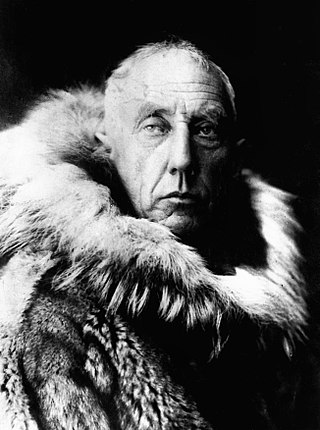
Roald Engelbregt Gravning Amundsen was a Norwegian explorer of polar regions. He was a key figure of the period known as the Heroic Age of Antarctic Exploration.

Livingston Island is an Antarctic island in the Southern Ocean, part of the South Shetlands Archipelago, a group of Antarctic islands north of the Antarctic Peninsula. It was the first land discovered south of 60° south latitude in 1819, a historic event that marked the end of a centuries-long pursuit of the mythical Terra Australis Incognita and the beginning of the exploration and utilization of real Antarctica. The name Livingston, although of unknown derivation, has been well established in international usage since the early 1820s.
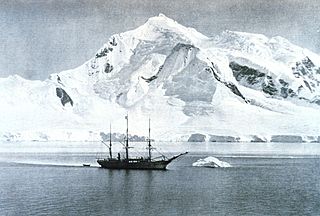
The Belgian Antarctic Expedition of 1897–1899 was the first expedition to winter in the Antarctic region. Led by Adrien de Gerlache de Gomery aboard the RV Belgica, it was the first Belgian Antarctic expedition and is considered the first expedition of the Heroic Age of Antarctic Exploration. Among its members were Frederick Cook and Roald Amundsen, explorers who would later attempt the respective conquests of the North and South Poles.
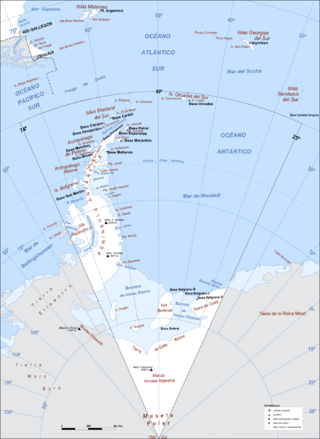
Argentine Antarctica is an area of Antarctica claimed by Argentina as part of its national territory. It consists of the Antarctic Peninsula and a triangular section extending to the South Pole, delimited by the 25° West and 74° West meridians and the 60° South parallel. This region overlaps British and Chilean claims in Antarctica. Argentina's Antarctic claim is based on its continued presence at a base on Laurie Island in the South Orkney Islands since 1904, and the area's proximity to the South American continent. Argentina's claim is subject to the Antarctic Treaty. Administratively, Argentine Antarctica is a department of the province of Tierra del Fuego, Antarctica, and South Atlantic Islands. The provincial authorities are based in Ushuaia. Despite the claim to this Antarctic area, Argentinean authority extends no further than the nation's bases.

Brazilian Antarctica is the Antarctic territory south of 60°S, and from 28°W to 53°W, proposed as "Zone of Interest" by geopolitical scholar Therezinha de Castro. While the substance of that designation has never been precisely defined, it does not formally contradict the Argentine and British claims geographically overlapping with that zone. The country formally expressed its reservations with respect to its territorial rights in Antarctica when it acceded to the Antarctic Treaty on 16 May 1975, making the first official mention of the Frontage Theory, which states (simplified) that sovereignty over each point in Antarctica properly belongs to the first country whose non-Antarctic territory one would reach when travelling north in a straight line from such a point. The Frontage Theory was proposed by Brazilian geopolitical scholar Therezinha de Castro and published in her book Antártica: Teoria da Defrontação.
The Machu Picchu Scientific Base is a Peruvian polar scientific research facility in Antarctica, established to conduct Antarctic research on geology, climatology and biology. More specifically, its purpose is to study the continent's geological past, potential sea resources, wind strengths, air pollution, and the animal adaptation in a freezing environment. The base is named after the World Heritage site Machu Picchu.

Christo Pimpirev is a Bulgarian scientist (geologist) and polar explorer.

Juan Carlos I Antarctic Base, named after the former king of Spain, Juan Carlos I, is a seasonal scientific station operated by Spain, opened in January 1988. Situated on Hurd Peninsula, Livingston Island in the South Shetland Islands, Antarctica.

Camp Byers is a Spanish seasonal base camp on Byers Peninsula, Livingston Island in the South Shetland Islands, Antarctica. The locality is also designated for use as an International Field Camp. When necessary for scientific research purposes, temporary camping is allowed elsewhere on the protected peninsula under certain conditions.

Antón Lamazares is a Spanish painter, who is, along with José María Sicilia, Miquel Barceló and Víctor Mira, a member of the "generación de los 80". Working elaborate surfaces of wood and cardboard with varnish and other materials, he has created a very personal medium and artistic language. From an initially playful expressionism, his style has developed toward abstract expressionism and straightforward abstraction, and, more recently, a sort of minimalism in which an intimate dialogue between soul and memory, the spiritual and the sensual, poetry and dream-life can take place. His works have been exhibited throughout the world and are held by numerous important institutions, including the National Museum Reina Sofía, the Galician Centre for Contemporary Art, the Madrid Museum of Contemporary Art and the Marugame Hirai Museum of Japan, as well as by many private collectors and foundations.
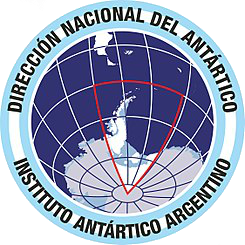
The Instituto Antártico Argentino is the Argentine federal agency in charge of orientating, controlling, addressing and performing scientific and technical research and studies in the Antarctic.

Teresa Silva is a Spanish elite sportswoman with disabilities, founder and president of Fundación También. She has also made a name for herself in disciplines such as skiing and adapted sailing, in which she has been Champion of Spain and Regional Champion, respectively. Creator of the first female adapted alpine sit skiing competition team in Spain in 2007. President of the Spanish 2.4 mR Sailing Association. She is also a recognised speaker in the world of disability and adapted sports.
Alejandro 'Álex' Cacho Hernández is a Spanish footballer who plays for CA Cirbonero as a right back.

Uruguayan Antarctica is the sector of Antarctica where Professor Julio César Musso believes the Oriental Republic of Uruguay should exercise its sovereignty. It was not assigned a specific definition nor meant a territorial claim, but rather was intended as an area of natural action of the southern maritime projection of Uruguay. Uruguay is part of the Antarctic Treaty System as a consulting member, and it reserved the right to make a territorial claim.

Javier Melloni Ribas is an Italian-Catalan Jesuit anthropologist and theologian.

Josefina Castellví Piulachs is a Spanish oceanographer, biologist and writer. Castellvi Peak on Hurd Peninsula, on Livingston Island in Antarctica is named in her honour. In 1984 she was the first Spaniard to participate in an international expedition to Antarctica. She received her bachelor's degree in 1957 and a PhD in biological sciences at the University of Barcelona in 1969. In 1960 she started working for the Institut de Ciències del Mar in Barcelona. In addition, she conducted research at the Spanish National Research Council (CSIC) and was a delegate in Catalonia for two years (1984-1986).
Javier Viver is a sculptor, photographer, designer and editor of photobooks. His work proposes a debate between the iconography and the inconoclasty as means of the invisible apparition.
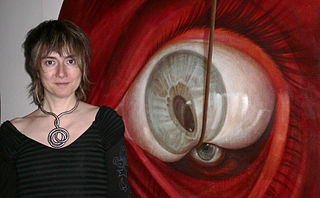
Marina Núñez is a Spanish artist, and a professor at the University of Vigo. Her work is included in the collections of Museo Nacional Centro de Arte Reina Sofía in Madrid, Artium in Vitoria, MUSAC in Leon, Patio Herreriano in Valladolid, TEA in Tenerife, Fundación La Caixa, Fundación Botín, Corcoran Gallery of Art in Washington, DC, National Museum of Women in the Arts in Washington DC, Mint Museum of Art in Charlotte, North Carolina, Katzen Arts Center, American University Museum, in Washington DC, Fonds régional d'art contemporain in Corsica, France.

The COVID-19 pandemic in Antarctica is part of the worldwide pandemic of coronavirus disease 2019 caused by severe acute respiratory syndrome coronavirus 2. Due to its remoteness and sparse population, Antarctica was the last continent to have confirmed cases of COVID-19 and was one of the last regions of the world affected directly by the pandemic. The first cases were reported in December 2020, almost a year after the first cases of COVID-19 were detected in China. At least 36 people are confirmed to have been infected. Even before the first cases on the continent were reported, human activity in Antarctica was indirectly impacted.

Uxua López Flamarique is a Spanish telecommunications engineer and environmental activist, expert in renewable energy, and a member of the International Network of 1000 Women Scientists against Climate Change, an initiative of Homeward Bound.